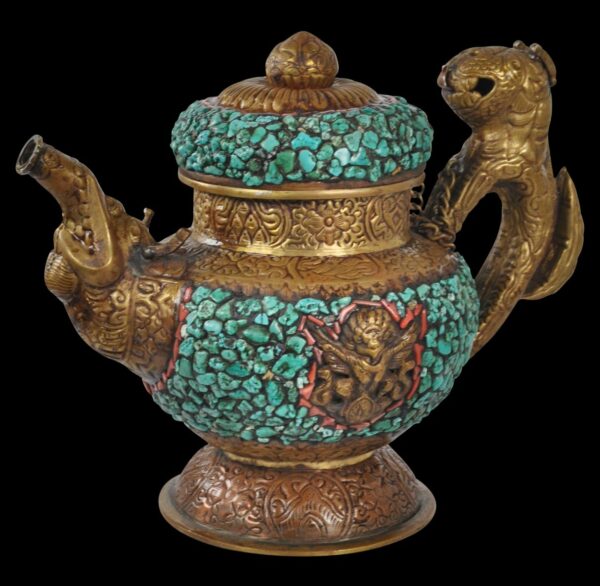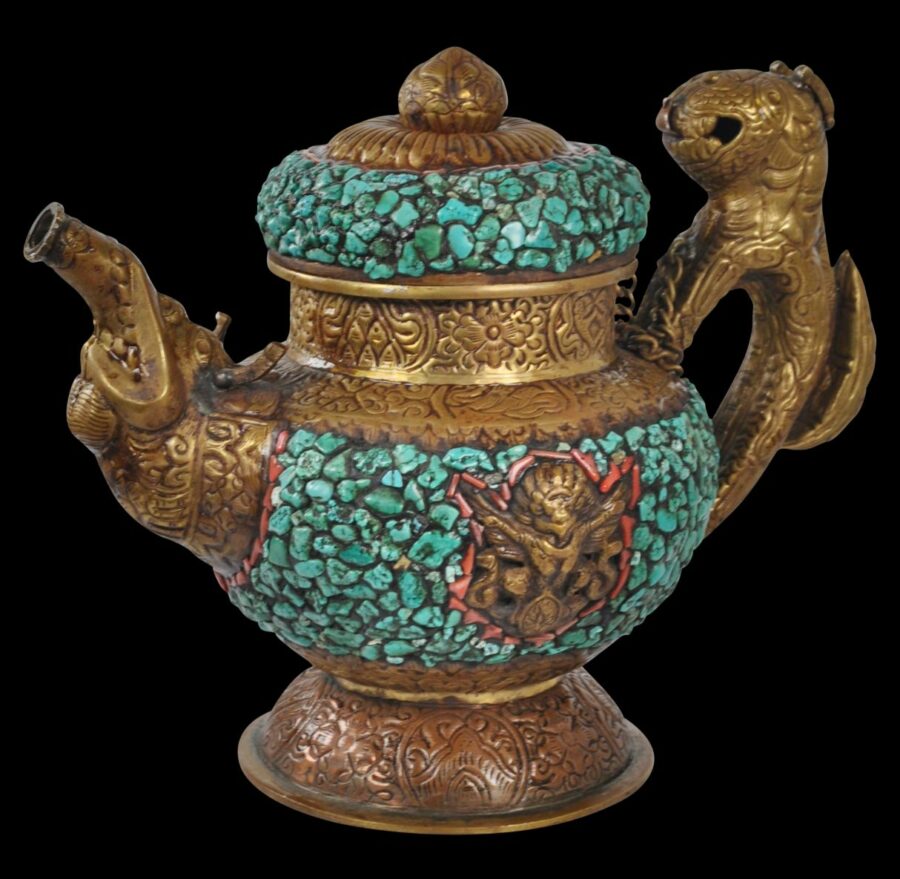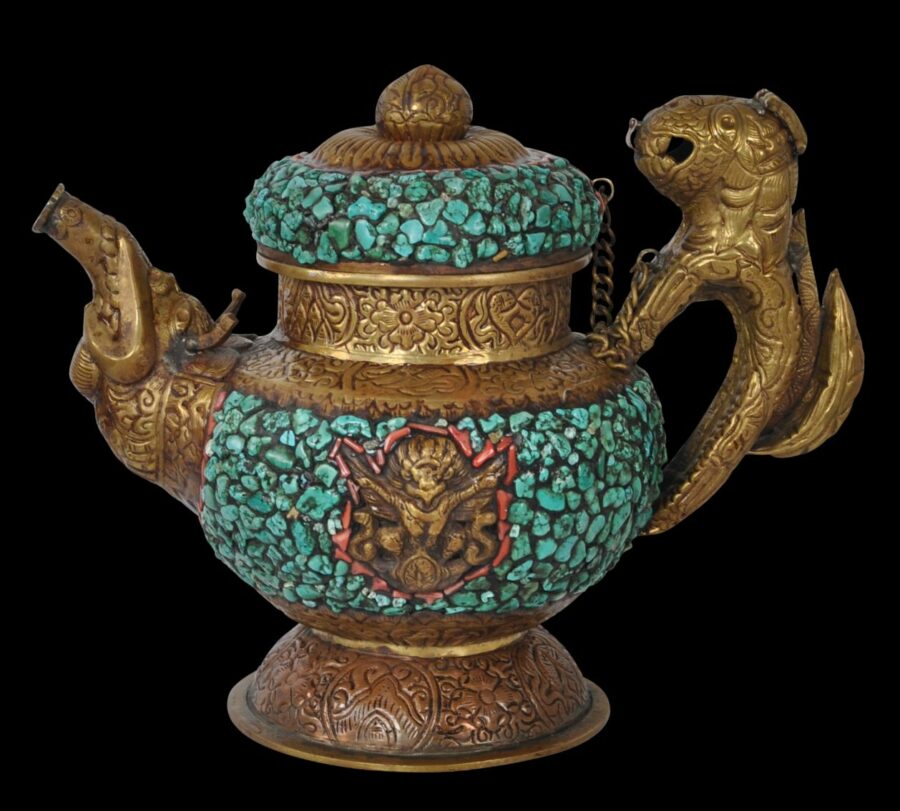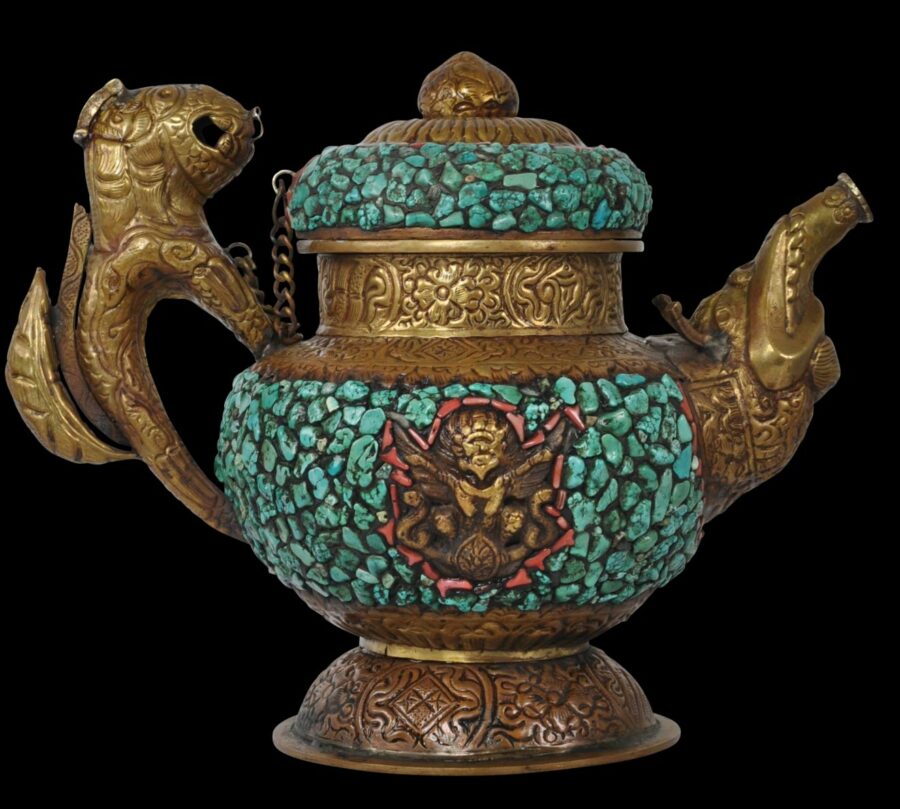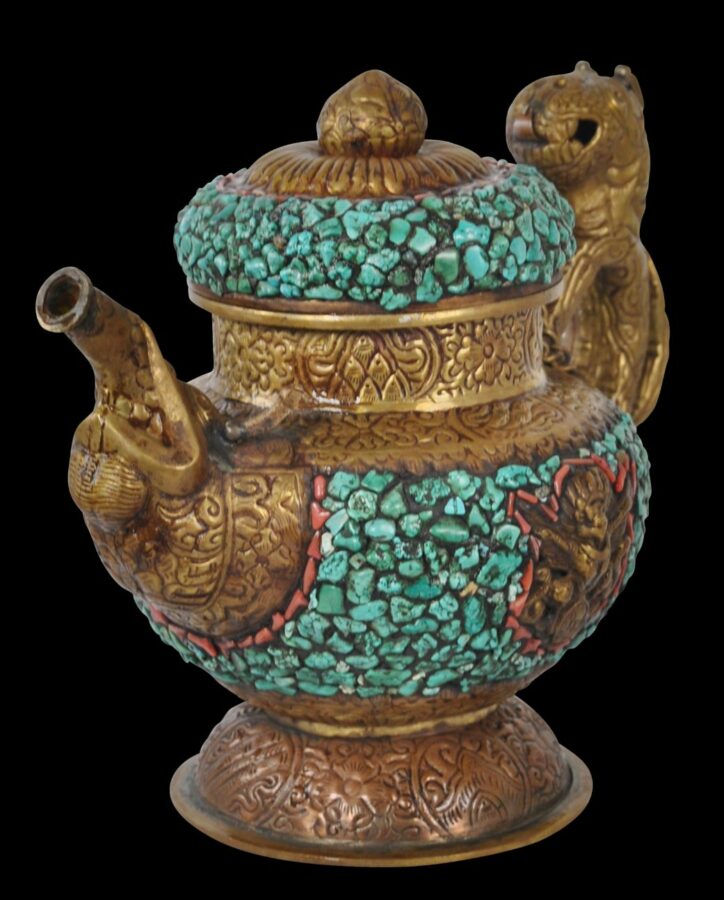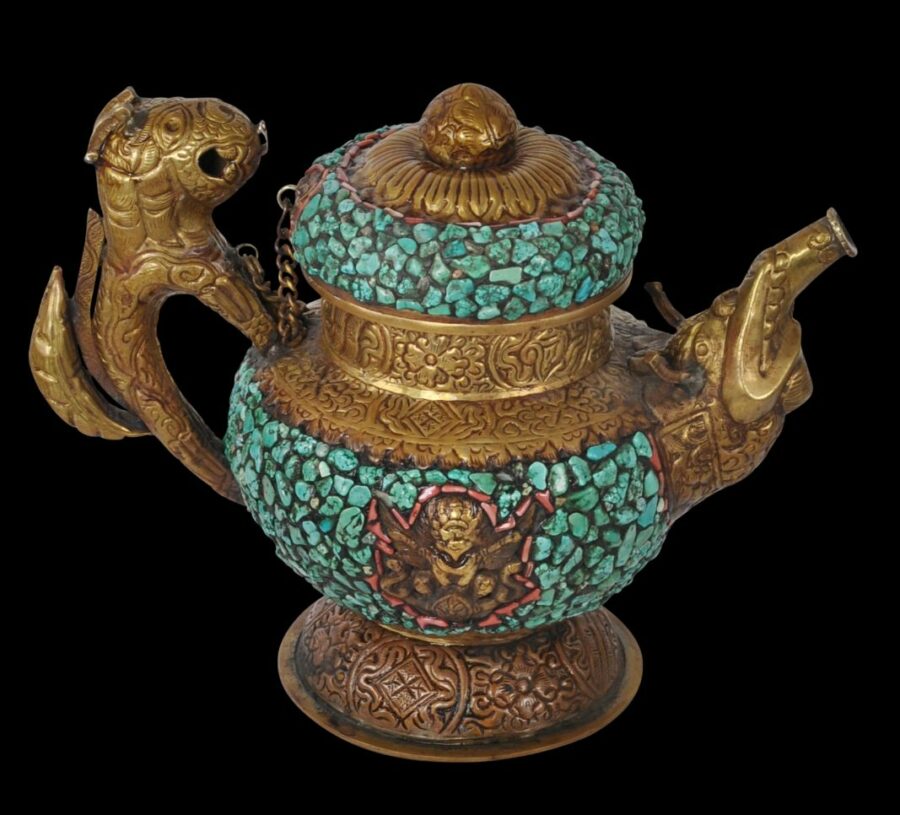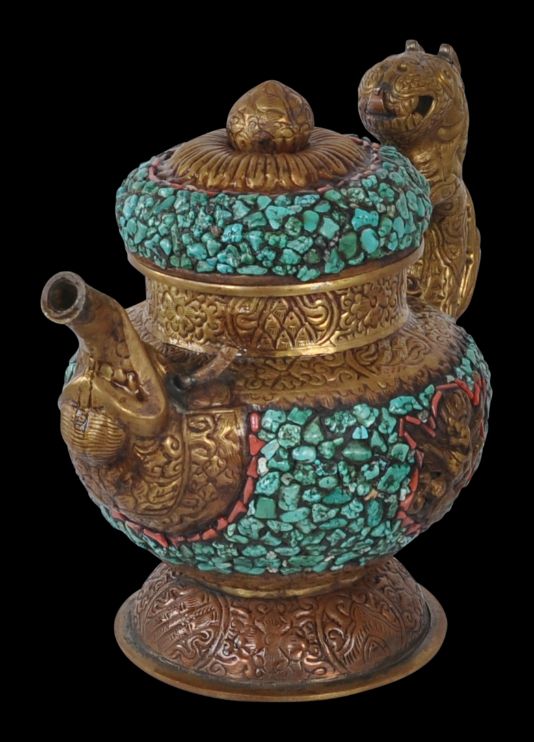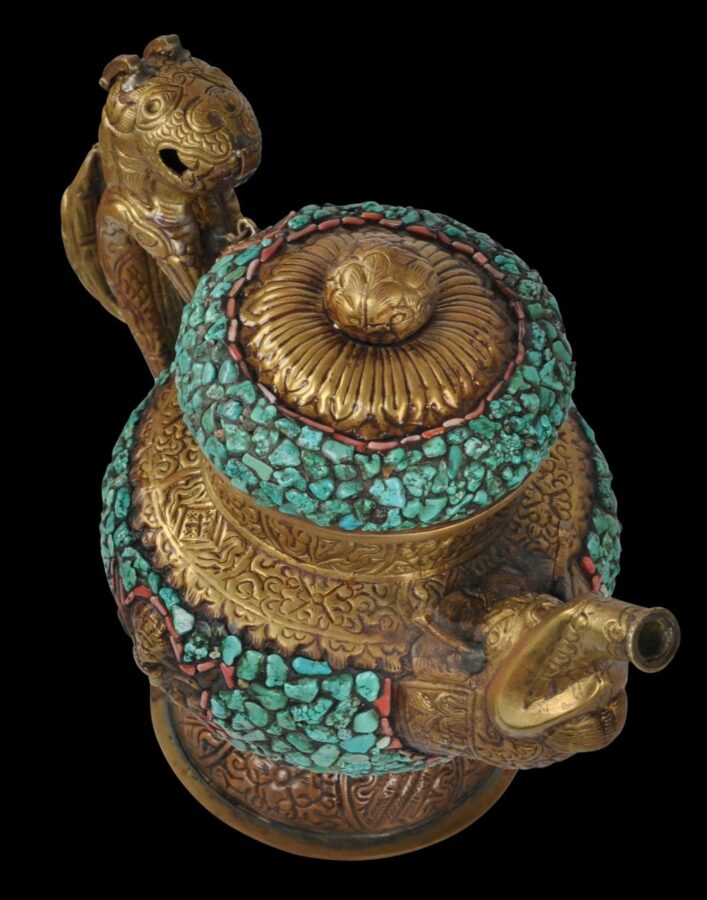This unusual teapot has been made in Ladakh in northern India in the first part of the 20th century most probably for the colonial administrator market. It is based on the traditional form of a Ladakhi-Himalayan teapot.
It is of gilded, impressed copper. The handle is in the form of a stylised canine-like dragon. The spout comprises a long snouted makara. The lid is in the form of a rounded cushion with a lotus-bid finial. A chain connects the lid to the handle. The foot is round and domed.
The most striking element of the teapot is its encrustation: the body of the teapot and the lid are almost entirely covered in turquoise-coloured chips and coral segments that have been embedded in a covering of dark tree resin. Both sides of the teapot also are decorated with a Garuda figure and each of these is bordered by a row of coral.
The interior of the teapot and lid have been tinned, suggesting that the maker’s intended for the vessel to be used.
Ladakh is a region of India that is part of the larger Kashmir region. The area is in the foothills of the Himalayas. It is one of the most sparsely populated regions in India, and its culture and history are closely related to that of Tibet.
Embedding metalwork items with turquoise-coloured chips to fashion items for the colonial expatriate market is an artform that developed in the late 19th century in Kashmir. A process was developed whereby pashm, a type of white stone that was made more absorbent by baking was then dyed turquoise blue-green and then polished, to emulate real turquoise. The chips were then embedded in lac or resin that had been coated over the surfaces of metalwork. The resultant items became known as ‘turquoiseware’ (Saraf, 1987, p. 149).
The teapot is in fine condition. All the coral is genuine and all the coral and ‘turquoise’ chips are present.
References
Saraf, D.N., Arts and Crafts Jammu and Kashmir: Land, People, Culture, Abhinav Publications, 1987.


